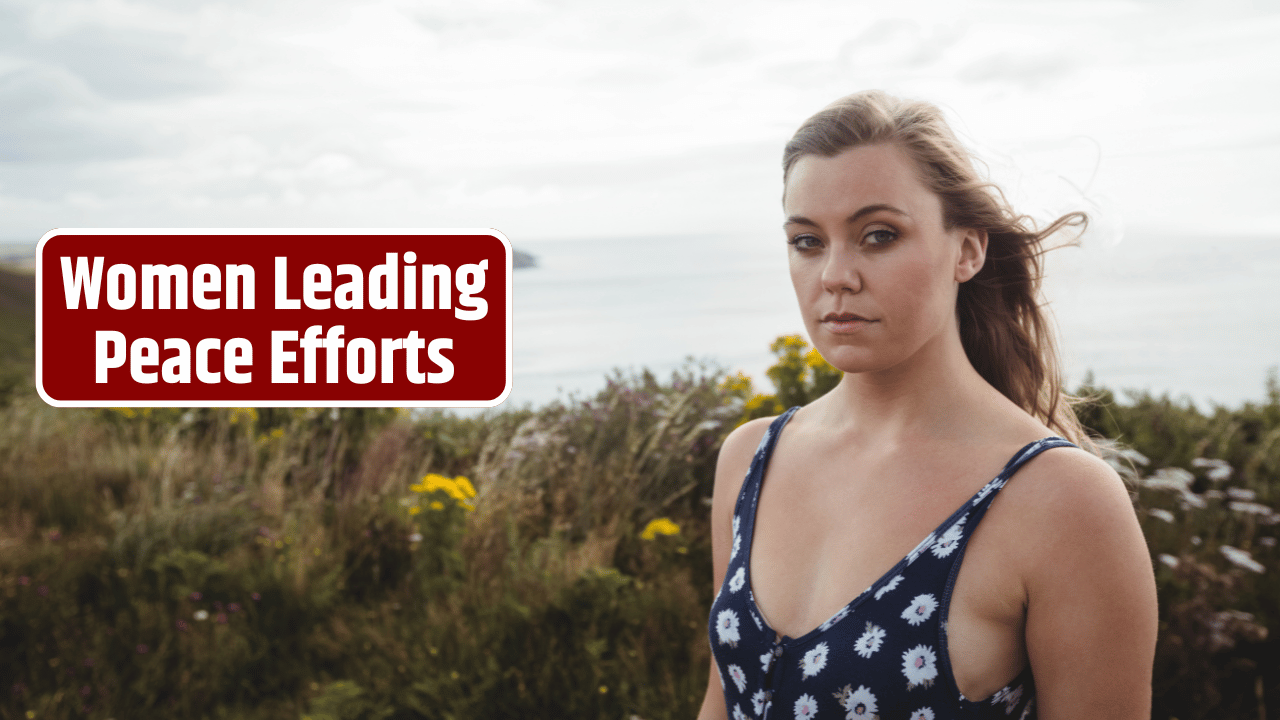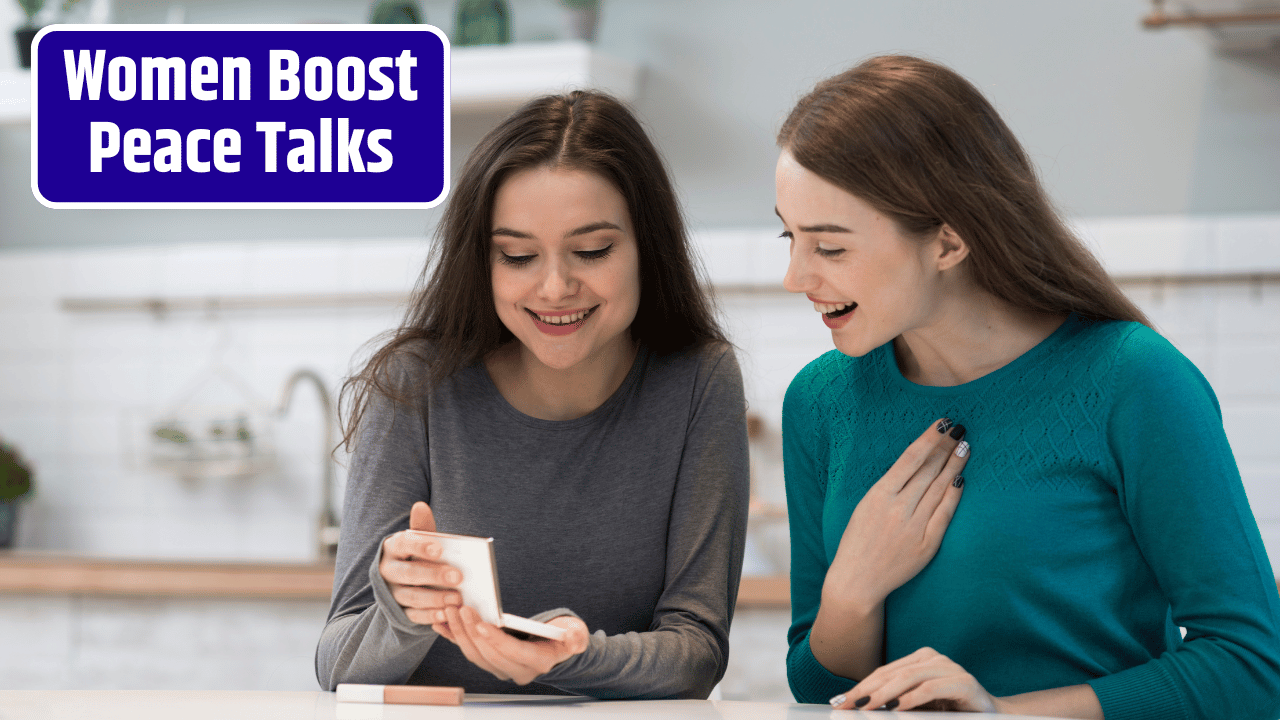She wasn’t supposed to be at that table. Not the big one, anyway — the one with the maps, the men in suits, the future of entire nations sprawled out like a game of Risk. But there she was, with her pen, her voice, and a spine forged in fire.
We used to talk about women in conflict zones as collateral. As victims. As ghosts in the margins of headlines. Now? They’re front and center — organizing peace talks, leading negotiations, and rewriting what peacebuilding even means.
Table of Contents
The Shift: From Silence to Strategy
There’s been a quiet rebellion underway. Not the kind with bullets, but the kind with meetings in church basements, WhatsApp group chats, and grassroots networks that span across tribal, religious, and political lines.
It’s been bubbling for decades — Liberia’s women famously formed a peace movement in the early 2000s that helped end a 14-year civil war. Dressed in white, armed with prayer and protest, they staged sex strikes and sit-ins that forced their way into the male-dominated peace process. Leymah Gbowee, one of their leaders, later won the Nobel Peace Prize. That wasn’t just a nice moment. It was a turning point.
Since then, women have taken on formal roles in conflict resolution across the globe — from Syria to Colombia to South Sudan. They’re no longer asking for a seat at the table. They’re bringing the damn table.
Quick Snapshot: Women’s Involvement in Peace Processes
| Country | Conflict | Women’s Role | Outcome |
|---|---|---|---|
| Liberia | Civil War (1989–2003) | Grassroots peace movement, mediation | Peace agreement, women-led transition |
| Colombia | Civil War (1964–2016) | Formal negotiators in peace talks | Landmark gender-sensitive peace deal |
| Syria | Ongoing conflict | Syrian Women’s Advisory Board (UN-backed) | Consultative role in peace negotiations |
| Philippines | Moro conflict | Miriam Coronel-Ferrer as chief negotiator | Successful peace deal signed in 2014 |
| Afghanistan | Pre-2021 | Women at intra-Afghan talks | Mixed results, limited post-Taliban |
Why Women? Because They Think Differently — And That’s a Good Thing
This isn’t some feel-good diversity hire move. Studies by UN Women and others consistently show that when women are involved in peace processes, the outcomes are more durable. Like, 35% more likely to last at least 15 years kind of durable.
Why? Well, partly because women often focus on community needs over power grabs. They emphasize reconciliation, education, healthcare — stuff that actually keeps the peace rather than just hitting pause on the violence.
And they usually bring voices that aren’t usually heard: displaced people, ethnic minorities, survivors of sexual violence. Instead of looking for who’s gonna control the oil fields, they’re asking, “How do we keep our kids safe?”
But It’s Not All Roses and Nobel Prizes
Let’s not get too cozy. There’s still serious resistance.
Even when women get to the table, they’re often sidelined, patronized, or flat-out ignored. They’re told to “focus on women’s issues,” as if war, peace, and governance aren’t gendered already. And in ultra-patriarchal societies, stepping into leadership can trigger real danger — threats, harassment, even assassination.
And then there’s the tokenism problem. Putting one woman in the room and calling it inclusion is like dropping one cilantro leaf on a curry and calling it garnish. Doesn’t cut it.
So yeah, the struggle’s still real. But the difference now? Women are fighting back. With networks. With policy. With receipts.
The Future is Feminist (and Fierce)
The trendlines are undeniable. From local councils to the U.N., there’s growing momentum behind the idea that sustainable peace needs inclusive leadership. That doesn’t mean just ticking boxes — it means redesigning the process itself.
We’re seeing this in the way younger women leaders are stepping up — not waiting for permission, not following the old diplomatic playbook. They’re forging alliances across borders, across faiths, across ideologies.
And here’s the spicy bit: They’re not asking to lead like men. They’re redefining what leadership looks like — collaborative, empathetic, and damn effective.
Real Talk: Why Should This Matter to You?
If you think this is just about distant conflicts in places you can’t pronounce, think again. The way peace is built — or broken — ripples across the globe. Refugee flows, global markets, energy prices, international security… they’re all tied up in how conflicts end.
When women help shape that ending? It tends to stick.
And maybe, just maybe, we get a world where “peace” doesn’t mean a fragile ceasefire but a real, lived sense of safety, dignity, and opportunity.
FAQs
Isn’t conflict resolution a technical field? Why does gender matter?
Conflict resolution is about people, not just policies. Women bring in critical perspectives from communities that are often most affected — and that makes peace more grounded and sustainable.
Are women actually leading negotiations, or just supporting?
Both. In some cases, women have been chief negotiators (like in the Philippines). In others, they’ve organized grassroots movements that pressured official talks into happening (like in Liberia).
Doesn’t involving too many voices slow down peace processes?
Maybe in the short term. But studies show inclusive peace deals are more durable. So it’s a smart investment of time.
What role do international organizations play in supporting women?
Huge. The UN, EU, and NGOs often create spaces for women’s participation and offer funding and training. But local legitimacy still matters more than outside help.
Is this just a trend or a permanent shift?
It’s building momentum, but whether it sticks depends on sustained political will — and pressure from people like you and me.














